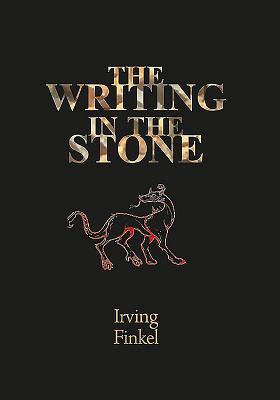The Writing in the Stone is a wonderfully odd beast. Essentially a gothic novel but set in ancient Assyria and written by Irving Finkel, an Assyriologist who looks exactly as an Assyriologist should look.
It reminded me most of William Beckford’s Vathek. On the surface level, both novels are eastern tales surrounding strange (and often quite gooey) religious practices - though Finkel’s engagement with his setting is far more deeply felt than Beckford’s orientalist fantasy. Both books also share a similarish plot. A stranger enters with a strange, delightful and intriguing object which ends up in the hands of a cruel and powerful psychopath with access to the demonic. These characters are then led by their curiosity, must leave their homes, travel to new places and screw over the people they meet until they find themselves in a hell they fought to get to.
The object in The Writing in the Stone is a stone. A wandering healer dies in a small town and has it in his position. The healer had a dodgy reputation, like most healers he had a skill at summoning demons and pulling them out of sick people but unlike the reputable ones, he was known to let the demons hang around. The local priest immediately sees the value of the stone. It’s full of writing but even he, as the most learned man in the town, can’t read most of them. He decides to take it to King Ashurbanipal in Nineveh.
The King gives it to his head exorcist, who can’t read it either. The exorcist knows he cannot admit this, but also that the rock must be of great power. He fools the king, has a servant kill the priest and takes another servant to find where the rock came from. He is not a nice man. There are memories where he blinded another student, memories of past murders and hopes for murders to come. He does some very icky necromancy on the original dead healer to point him in the right direction and sets off.
His servant is a mute giant with three testicles, who brings attention to himself by being too overt in his rapes and murders - particularly one where the woman’s rigor-mortis sticks herself to him. The exorcist might have to dispose of him eventually. There’s an incidental nature to the violence in this book that make it disturbing.
The note at the end reveals that the stone is a freak geological formation, that the cracks and crystals of a particular geological concoction make wedge shapes that look like cuneiform writing. This is why the stone includes some words along with unknown shapes that look like words - however, the book is not only set in a time and place where magic is believed in, but where it actually exists.
There are demons and ghosts that pop up and, when the exorcist finds the cave, it’s an actual sacred cave where words are stored by the Gods until they are needed. The the exorcist remembers, mortal man is not supposed to be in such places and they tend to have guardians… then he sees something.
This is a grim, nasty little story swimming in atmosphere and presented beautifully with decorated capital letters at the beginning of each chapter. One such letter depicts ‘The Game of Ur’, I have a recreation of it, it’s fun to play.



No comments:
Post a Comment